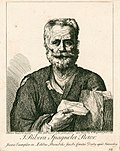File:La Sagrada Familia, por José de Ribera.jpg

Dimensioni di questa anteprima: 445 × 599 pixel. Altre risoluzioni: 178 × 240 pixel | 356 × 480 pixel | 570 × 768 pixel | 760 × 1 024 pixel | 1 520 × 2 048 pixel | 2 763 × 3 722 pixel.
File originale (2 763 × 3 722 pixel, dimensione del file: 1,89 MB, tipo MIME: image/jpeg)
Cronologia del file
Fare clic su un gruppo data/ora per vedere il file come si presentava nel momento indicato.
| Data/Ora | Miniatura | Dimensioni | Utente | Commento | |
|---|---|---|---|---|---|
| attuale | 20:30, 8 dic 2015 |  | 2 763 × 3 722 (1,89 MB) | Alonso de Mendoza | User created page with UploadWizard |
Pagine che usano questo file
Le seguenti 2 pagine usano questo file:
Utilizzo globale del file
Anche i seguenti wiki usano questo file:
- Usato nelle seguenti pagine di ca.wikipedia.org:
- Usato nelle seguenti pagine di de.wikipedia.org:
- Usato nelle seguenti pagine di en.wikipedia.org:
- Usato nelle seguenti pagine di et.wikipedia.org:
- Usato nelle seguenti pagine di fa.wikipedia.org:
- Usato nelle seguenti pagine di fi.wikipedia.org:
- Usato nelle seguenti pagine di fr.wikipedia.org:
- Usato nelle seguenti pagine di ja.wikipedia.org:
- Usato nelle seguenti pagine di lt.wikipedia.org:
- Usato nelle seguenti pagine di sk.wikipedia.org:
- Usato nelle seguenti pagine di tr.wikipedia.org:
- Usato nelle seguenti pagine di vi.wikipedia.org:
- Usato nelle seguenti pagine di www.wikidata.org:
- Q19911538
- Wikidata:WikiProject sum of all paintings/Collection/Metropolitan Museum of Art/17th Century
- User:Pharos/sandbox
- Wikidata:WikiProject sum of all paintings/Creator/Jusepe de Ribera
- Wikidata:Met Open Access Artworks Challenge/FA
- Wikidata:GLAM/Metropolitan Museum of Art/Highlights inventory
- Wikidata:GLAM/Metropolitan Museum of Art/TOAH inventory
- Wikidata:GLAM/Metropolitan Museum of Art/Reports
- Wikidata:WikiProject sum of all paintings/Catalog/The Metropolitan Museum of Art Guide
- Wikidata:WikiProject sum of all paintings/Catalog/Earl of Northbrook collection, 1889
- Usato nelle seguenti pagine di zh.wikipedia.org:



